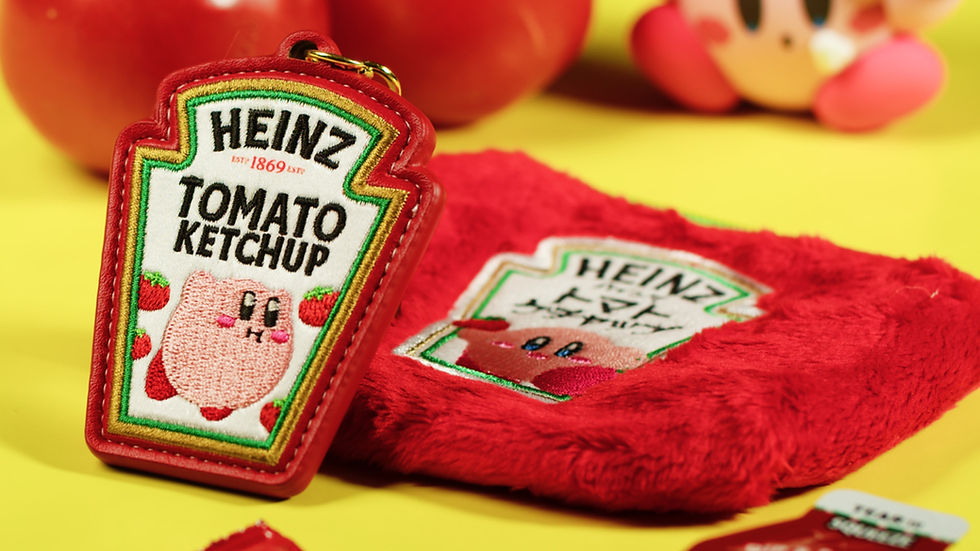Kirby & The Forgotten Facts #4: Celebrating Mario Day With Two Golden Easter Eggs
- Marc Kaliroff

- Mar 11, 2023
- 3 min read
Kirby & The Forgotten Facts is Kirby Informer’s weekly Friday column dedicated to obscure and niche Kirby trivia that even some of the most dedicated and die-hard fans of the pink puff may not be aware of! This week in our column, we are celebrating Mario Day [March 10th] by looking back at the Nintendo mascot's gold appearances in the Kirby series. Enjoy!
******

While many of you are likely aware that Mario and some of his fellow Mushroom Kingdom residents appear in Kirby Super Star for the Super Nintendo and its remake Kirby Super Star Ultra for the Nintendo DS, you probably had no idea that the famous red plumber makes more than one cameo in both versions of the game.
Outside of King Dedede's iconic arena from Spring Breeze and the Megaton Punch sub-game, when using the Stone copy ability in any mode of Kirby Super Star and Super Star Ultra, players can encounter a rare transformation that will turn the pink puff into a gold statue of Mario or Samus Aran from the Metroid series.
While both the gold Mario and Samus easter eggs returned for Kirby Super Star Ultra, Mario had to undergo a complete redesign in the remake due to Shigeru Miyamoto making internal rules at Nintendo regarding the character's appearance. To make Mario "less kid-friendly" towards the end of the 90s, Miyamoto had Nintendo's developers stop using the peace sign gesture.

In a 1999 interview between EarthBound mastermind Shigesato Itoi and Shigeru Miyamoto, Mario's creator had a lot to say regarding the character becoming more childish and catering toward children over the years. In the interview, Miyamoto said, "[Super Mario Bros.] was meant to be the kind of game that 18-year-old guys would be able to play together and enjoy, so I felt this disconnect when he started being forced into this more elementary school-focused, narrowed role."
After Mario made his jump into the 3D era with Super Mario 64, Miyamoto wanted to ensure that Nintendo's mascot would be seen as a character for both younger and older audiences. For this reason, Miyamoto convinced Nintendo’s developers to stop Mario from permeating with specific characteristics in all of his appearances. Miyamoto no longer wanted Mario to be a character that was always laughing and smiling. He wanted Mario to show a more serious and determined side of himself.
While Mario's more joyful characteristics did inevitably stick around for the most part, one thing Miyamoto succeeded at enforcing internally at Nintendo was stopping the character from making his iconic peace sign gesture in future video games.
A pose previously integrated into the character by Miamoto's co-designer Takashi Tezuka, Mario became known for throwing a peace sign into the air as a symbol of victory after completing a level or collecting a star. Stopping Mario from ever making this pose may seem particularly odd on the surface, however, in Japanese culture, the peace sign is perceived by some people as being something silly and childish. In Japan, saying "peace" before a photo-op is like saying "cheese" in America--it's just commonly done to be funny or cute.

In 2008’s Kirby Super Star Ultra, the Mario stone transformation received a total redesign in accordance with Miyamoto's internal guidelines for the character. For this reason, Super Star Ultra's Mario stone transformation was altered from a peace sign to his iconic pose of punching in the air. Additionally, rather than having his left hand crossed behind his back like in the official Super Mario World artwork, Mario had both his hands on display.
In 2017, Mario finally began making the peace sign again with the release of Super Mario Odyssey on Nintendo Switch, but the gesture is a callback that will only play randomly out of three animations when collecting a Moon.
To this day, Miyamoto's internal ban on the peace sign for Mario at Nintendo still affects the character, but that hasn't stopped him from occasionally using the iconic gesture in the games and plenty of retro-themed merchandise. While its effect can be seen all over the Mario series, it's interesting to always see how Nintendo's care for its characters can even affect other small easter eggs and cameos in other franchises.
Happy MAR10, everyone!



